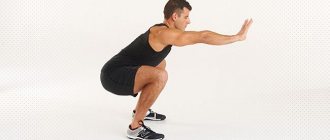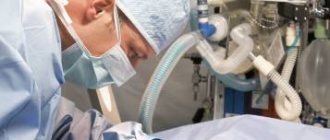When muscles work intensively, various kinds of biochemical reactions take place. In this regard, metabolism occurs at a good speed, oxygen is intensively supplied to the cells.
Thanks to such processes in the body, treatment is more productive, new cells are actively appearing, gastritis cannot become chronic.
Therefore, physical therapy for gastritis brings good results and has a positive effect on breathing, heart and blood vessels.
Objectives of therapeutic gymnastics
A set of exercises has a positive effect on the body, and for gastritis, physical education sets the following goals:
- remove inflammation, if any;
- anesthetize;
- influence the restoration of processes in the lining of the stomach and abdominal region to progress, and this will happen due to active blood circulation;
- influence the patient's mental state;
- improve the motor capabilities of the stomach, as well as secretory function;
- help the intestines start working naturally again;
- carry out adaptation of the patient, normalize motor ability.
Exercise therapy for patients with gastritis with high acidity
The training regimen of people with gastritis with increased secretion is characterized by a rather high rhythm. Before starting the complex, prepare a chair with a back, 1 kg dumbbells, and an exercise mat on the floor.
- Stand at the back of the chair, grab it with your hands. Take a low swing with your right leg back. The back is straight. Do each leg 7-10 times.
- From the same position, swing your straight leg slightly to the side up to 10 times.
- Sit on a chair, take dumbbells. Move your body forward, arms down. Inhaling, raise your arms until they are parallel to the floor and hold for 2 seconds. Exhaling, gently lower through the sides. Do up to 10 times.
- Place your arms with dumbbells bent at the elbows behind your head. Straighten them over your head and bend them again 10 times.
- Put the dumbbells aside, lay out the mat and get down on all fours. At the same time as we inhale, we lift ourselves off the floor with our left arm and right leg. Let's stretch. Lower your limbs as you exhale. Now we work with our right hand and left foot. Repeat 7 times on each side.
- From a position on all fours, support on both hands. The right leg is raised to parallel with the floor and swings down 10 times. Change your leg. Then perform 10 swings with each leg left and right.
- In the same position, while inhaling, we arch our back upward, like a cat. As you exhale, bend your spine downward. We do it 10 times.
- Without changing posture, we smoothly lower ourselves onto our heels, arms extended forward along the floor, head lowered. Stretch your back and relax.
Exercise for low acidity
Therapeutic exercise for gastritis with low acidity should be performed at a certain pace, it is better that it be moderate, then enzymes and hydrochloric acid begin to be produced. You need to monitor your pulse, which should be no more than 150 beats per minute.
The set of exercises consists of two types of exercises:
- Respiratory;
- Developing abdominal muscles.
You should not sharply increase the load, everything should happen gradually, after which the body’s condition will improve significantly. When gastritis is in acute form, gymnastics is done while sitting, lying on your back or reclining. There is no need to move suddenly, it will only cause harm. When the pain is not so severe, physical therapy takes place on the side. Later, a person can increase the load by performing exercises in a standing position or lying on his stomach.
Set of exercises:
- A person needs to stand up, extend his arms in front of him, they must be straight. After this, the brushes begin to rotate in different directions. After ten repetitions of these movements, you can proceed to the next exercise.
- You should get on all fours. After this, you need to inhale the air strongly, accompanied by raising your arm, first to the side and then up. As you exhale, you should take the original position. It is required to repeat such movements for each hand a dozen times.
- In the same body position, you need to inhale again, while arching your back with your head down. Exhalation is accompanied by a return to the starting position. Again you need to repeat a dozen times.
- You should lie on your back, then inhale while raising your leg. Limbs need to be changed. Same number of repetitions.
This physiotherapy has a positive effect on the functioning of the stomach.
Warm-up
Before starting the main part of physical therapy, always warm up for 5–10 minutes. The muscles warm up and prepare for the upcoming load, reducing the risk of injuries and sprains. The desired effect is achieved by a series of simple exercises:
- Walk 60 seconds. Raise your knees higher and work with your hands in a coordinated manner.
- Feet shoulder-width apart, hands along the hips. At the same time, as you inhale, rise onto your tiptoes, arms moving smoothly across your sides. Exhale, press your feet to the floor, and gently lower your arms. Do it 5 times.
- Five circular movements of the head clockwise, then in the opposite direction.
- Alternating rotation of the arms 5 times forward and backward to warm up the muscles and ligaments of the shoulder.
- Standing, hands on waist. With an inhalation, smoothly lean to the right, with an exhalation, slowly rise. We inhaled again, tilted to the left, exhaling carefully. Number of repetitions: 5 for each side.
- Place your right leg slightly bent at the knee in front of you, resting on your toes. Perform a series of 5 rotational movements of the foot without lifting the toe off the floor in each direction. Do the same with your left foot.
Having finished warming up, move on to the base load. The technique of this part of physical therapy differs for gastritis with increased and decreased secretory function.
Exercise for high acidity
When secretory activity increases, a certain set of exercises should be started. All loads during physical education should be moderate, while charging is performed slowly. This physical therapy should take place immediately after or before meals. The pulse is also important; it should not be too fast (up to 120 beats per minute).
Medium and large muscles receive loads. Exercises should be repeated more often, this helps the cells function normally. Skating, swimming, and various active games involving a ball or relay races will also be useful here. In a word, the load should be complete, after which the person will even feel much better psychologically.
Some exercises:
- Performed while standing. You need to place your hands behind your head. Next, you need to inhale, during which you move your leg to the side, your back should bend. Exhalation is accompanied by a return to the original position. You need to change your legs. Repeat up to ten times for each leg.
- The situation is the same. You need to lean forward with relaxed upper limbs and shoulders, after which you should swing your arms for about one minute.
Therapeutic exercises for patients with gastritis with low acidity
Training for chronic hypoacid gastritis is smooth and slow. They practice lying on a mat and strengthen their arm muscles with 0.5 kg dumbbells.
- Place your feet slightly wider than shoulder width, hands on your waist. Toes point forward. We squat slowly. Move down with inhalation, exhale. Knees at right angles, slightly springy.
- Spread the mat and lie on your back. Take the dumbbells in your hands and lift them up. Smoothly spread your straight arms out to the sides five times and touch the floor. When the muscles get stronger, increase the number of repetitions to 10.
- Lying on the floor, straight arms with dumbbells extended along the body. With an inhalation, raise your arms until they are perpendicular to the floor, and exhale slowly downwards. Perform 5 times.
- Put away the dumbbells. Place your crossed legs bent at the knees on your stomach. Place your fingers in a lock at the back of your head, your back pressed to the floor. Raise your upper body above the floor by 15 cm and lower it smoothly. Do this 5–10 times.
- Lying on your back, arms parallel to the body. Legs are bent at the knees under and raised above the floor. Touch the floor with the toe of your right foot and move it to the starting position. Do this with each leg 5 times in turn.
- Lie on your right side. With your left leg slightly raised, make circular movements in a small amplitude to the right and left 5 times. Repeat on the other side.
- Sitting on the floor, spread your legs as far apart as possible. Try to touch the toes of your feet with your fingers extended forward in a springy tilt.
- Lie on your back with your eyes closed. Slowly inhale, exhale, relax.
Non-tiring walks in the fresh air, swimming, and aerobics in water have a positive effect on gastric secretion.
Contraindications
Physical exercises for gastritis have their contraindications:
- when an ulcer appeared in the acute period;
- bleeding;
- when the disease is accompanied by stenosis;
- bright pain syndrome;
- severe nausea, frequent vomiting.
When physical exercise is performed, the body's buffer compounds and energy reserves increase, it is saturated with enzyme compounds, calcium, and vitamins. Subsequently, oxidative processes are activated, restoration and acid balance occur. And all this has a positive effect on the functioning of the gastrointestinal tract. Thus, the fight against gastritis occurs.
Author : Ekaterina Shulga, especially for the site Zhkt.ru
Exercise therapy, what is its significance for gastritis?
Therapeutic exercise, which is prescribed for this disease, performs the following tasks:
- Normalization and toning of the activity of the central nervous system;
- Restoration of normal cortico-visceral connections;
- Improving the activity of the tracheobronchial and cardiovascular systems;
- Ensuring their adaptation to increasing physical activity;
- Normalization of motor and secretory functions of the gastrointestinal tract, metabolism.
Exercise therapy, during which muscle work becomes intense, helps accelerate metabolism and oxygen in cells due to various biochemical reactions occurring in the body. And this makes it possible to actively replace damaged cells with new ones, accordingly accelerating the healing process and reducing the risk that gastritis can become chronic.
What is the peculiarity of therapeutic exercises for a disease such as gastritis?
Since performing physical exercises for gastritis helps to normalize the secretion of gastric juice, and at the same time improve the enzymatic function of the stomach, exercise therapy is mandatory for all patients, not only when in the hospital, but also at home.
But there are several features that should be observed when prescribing. Firstly, exercise therapy should be carried out only after all the acute phenomena accompanying this disease have subsided and the temperature has normalized, and secondly, physical activity should be quite moderate. After classes, half an hour before meals, drink mineral water. In addition to the exercises included in the exercise therapy complex, contrast showers and walking are very useful for gastritis. Deep abdominal breathing is mandatory. In addition to general developmental exercises, therapeutic exercises also include breathing and relaxation exercises. There is a physiological dependence of the activity shown by the stomach on how much and how the muscles of the body work. This must be taken into account when prescribing therapeutic exercises, because gastritis occurs with both increased and decreased secretion of gastric juice. Therefore, a set of exercise therapy exercises is selected individually for each patient.
Exercise therapy for gastritis, general recommendations
All physical therapy exercises should be carried out only 20 minutes after drinking the prescribed mineral water, and half an hour before lunch. Under such conditions, an inhibitory effect occurs on gastric secretion.
Although exercise therapy with various sets of physical exercises is recommended for patients with increased and decreased secretions, all of them will benefit from healthy running. It improves the function of the digestive organs due to the vibration that occurs. But it should be taken into account that in case of gastritis with high acidity, instead of mineral water, you should drink a glass of oatmeal broth, which neutralizes excess acid secretion by enveloping the mucous membrane. After eating, approximately 2 hours later, walking at a slow pace is beneficial, and skiing, skating and swimming will also have a good effect. All this not only provides good physical exercise, but also improves your psycho-emotional state.
Exercise therapy for hyperacid and hypoacid forms of chronic gastritis
Exercise therapy for hyperacid and hypoacid forms of chronic gastritis.
The therapeutic effect of exercise therapy is to normalize the processes of excitation and inhibition in the cerebral cortex, restore damaged corticovisceral connections, normalize the secretory function of the stomach and eliminate inflammatory phenomena in the gastric mucosa. This occurs due to the activation of lymph and blood circulation of the abdominal organs under the influence of exercise therapy, and the regeneration of the mucous membrane due to the trophic effect of exercise therapy. Under the influence of gymnastics and massage, the motor function of the gastrointestinal tract (GIT) is normalized, the emotional background is improved, lost motor skills are restored and new ones are formed, and adaptation to physical activity occurs.
The method of therapeutic physical training for chronic gastritis depends on the nature of the secretory activity of the stomach.
The therapeutic effect of exercise therapy is the ability to normalize the secretory function of the stomach when performing muscular work of a certain intensity, pace and at a certain time, depending on the phase of digestion. Thus, an increase in the secretory function of the stomach is achieved with the help of moderate physical activity, prescribed 1.5-2 hours before a meal or 1.5-2 hours after a meal; inhibition of the secretory function of the stomach is observed when physical exercise is prescribed during the period of action of the food dominant ( i.e. immediately before or immediately after eating). Increased secretory activity decreases when performing exercises at a slow pace and monotonous movements. Emotionally intense activities stimulate the secretory function of the stomach. Exercise therapy means help reduce and eliminate inflammatory phenomena in the gastric mucosa due to the trophic effect, activation of reparative (restorative) processes during exercises that enhance lymph and blood circulation in the abdominal cavity, leading to normalization of the evacuation (motor) function of the gastrointestinal tract. The administration of general developmental exercises and outdoor games has a general stimulating effect, helps to increase the body’s nonspecific resistance and creates a positive emotional background, and leads to the prevention of the loss of motor skills and the formation of new motor skills.
During the period of exacerbation subsiding (with a decrease or disappearance of pain), the objectives of exercise therapy are the following: elimination of pain, improvement of impaired secretory function of the stomach, improvement of motility of the gastrointestinal tract. The general objectives of exercise therapy include: improving the psycho-emotional state; adaptation to higher motor loads.
The method of conducting classes for chronic gastritis with reduced secretory function of the stomach uses general developmental exercises for small and medium muscle groups with a small number of repetitions at an average pace. Special exercises for the abdominal muscles from facilitating starting positions (without a significant increase in intra-abdominal pressure). Static breathing exercises with limited range of motion of the chest and diaphragm.
Low mobility games are used.
A special lesson is carried out in a load mode - below average intensity (heart rate up to 120 beats/min). Starting positions - lying and sitting, the lesson is carried out 1 -1.5 hours before meals. A positive emotional foundation is required for those involved, so some of the exercises can be performed using a game method.
For gastritis with increased and normal secretory activity, the training methodology uses general developmental exercises for medium muscle groups at a slow pace with a large number of repetitions, relaxation exercises, static and dynamic breathing exercises. Exercises for the abdominal muscles are used to a limited extent (especially in the presence of even minimal pain).
Games of low mobility are used, but with a large number of repetitions of the same game elements, at a slow pace and load on the middle muscle groups.
The load is below average intensity (heart rate up to 120-130 beats/min). With the reduction and elimination of pain, the intensity of the load gradually increases to an average level (heart rate up to 140-150 beats/min).
Special tasks of exercise therapy during the period of remission: normalization of the secretory function of the stomach; reduction and elimination of inflammatory phenomena in the gastric mucosa, creation of favorable conditions for reparative processes, normalization of the motor function of the gastrointestinal tract.
General objectives of exercise therapy: increasing the body’s nonspecific resistance, adapting to increasing physical activity, normalizing the emotional background, preventing delays in motor skills and physical qualities, and developing new ones in accordance with the level of development.
For gastritis with increased secretory function during the period of remission, the exercise therapy technique uses general developmental exercises, which are advisable to carry out in the form of a sequential series of exercises. For example, stand up with your hands on your belt, sit down, stand up, bend to the right, left, sit down, bend your right leg, bend your left leg, straighten your legs, etc. This option for performing exercises (in combination with exercises carried out using the game method) allows activate the attention of those involved and maintain their cheerful mood. The number of repetitions of the open switchgear is small. Against the background of general developmental exercises, special exercises are used for the abdominal muscles from the starting positions lying, sitting, standing, the implementation of which helps to improve blood supply to the gastroduodenal zone and activates gastric secretion. Exercises for coordination of movements that require quick reactions are included. Games of below average and average mobility are used, with the inclusion of movements for the abdominals, elements for attention and coordination of movements.
Therapeutic gymnastics classes are carried out 1.5-2 hours before meals, or 1.5-2 hours after meals. It is advisable to combine exercise therapy with drinking mineral water - the session is carried out 20-40 minutes before taking it in order to activate blood circulation in the stomach. The load in the lesson is below average and the initial modes are of medium intensity (heart rate up to 130-140 beats/min).
In the method of exercise therapy for chronic gastritis with increased and normal acid-forming (secretory) function of the stomach, simple general developmental exercises are used, performed at an average pace: special exercises for the abdominal muscles are carried out from facilitating starting positions without a significant increase in intra-abdominal pressure. Relaxation exercises are used. The load is usually of medium intensity (heart rate from 120-130 to 150-160 beats/min).
Provided there is good tolerance to physical activity, the intensity of training increases, general developmental exercises are used in increasing dosages with a large number of repetitions and using weights and resistance (balls, dumbbells, partner). The intensity of the load after individual exercises reaches above average intensity (heart rate up to 170-180 beats/min). However, specific exercises for the abdominal muscles are limited and are carried out without significant effort or increasing intra-abdominal pressure. It should be noted that it is advisable to conduct classes immediately before a meal, or immediately after a meal, during the period of action of the food dominant to inhibit it, although this is not desirable.
When combining exercise therapy with the intake of mineral water, LH is carried out between the daily intake of water and lunch, in this combination there is an inhibitory effect on gastric secretion. Exercises in basic movements are used (running, jumping, walking, squatting) provided that the student’s cardiorespiratory system is sufficiently prepared, since the intensity when performing these exercises should be above average.
Outdoor games of medium and high mobility are used. It is possible to use sports games (volleyball, basketball, handball) according to simplified rules and relay races.
The effectiveness of exercise therapy is assessed based on the dynamics of the student’s subjective sensations, objective examination data, and functional studies of the stomach. Restoration of tolerance to physical activity is determined by functional indicators (tests) of the cardiorespiratory system, as well as physical performance or step test.
summary of the special lesson
Introductory part:
1. calm walking in a circle - 2-3 minutes.
2. Jumping in place - 1-2 minutes.
3. Easy running in a circle - 2-3 minutes.
Main part:
1. I.p. lying on your back, arms along your body. On the count of 1-2, raise the straight legs at right angles to the floor, on 3-4, slowly lower them 5-7 times, repeat
2.I.p. lying on your back. “Bicycle” at a slow pace - repeat 1-2 times
3. I.p. sitting. Slow bending of the torso forward - repeat 6-8 times
4. standing, hands on the belt. Tilt the body to the right, to the left - 6-8 times
5. I.p. on the side. Pull both legs to the stomach - 3-7 times
6. I.p. standing, hands on posture. Turn the body to the right, to the left - 6-8 times
7.I.p lying on your back. Raising arms and legs at the same time - 4-6 times
Final part:
1. Easy running in a circle - 2-3 minutes
2.Relaxation exercise
3. Diaphragmatic breathing.
4. Calm walk -1.5-2 min








